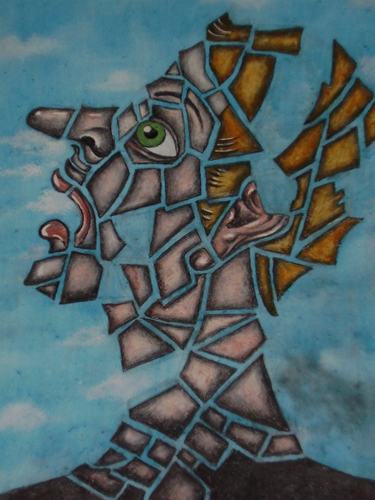 The interactive dimension of the patient-analyst
relationship received considerable attention in the early work of Ferenczi
(1916, 1950, 1955) and Rank (1929) and also in the interpersonal literature,
particularly in the writings of Sullivan dating from the 1930s. […] Attention
to the analytic interaction is also evident in the writing of Lacan (1936,
1952, 1956, 1961), Winnicott (1947, 1963, 1969, 1971), Little (1951, 1957),
Fairbairn (1958), Guntrip (1969) and Searles (1965, 1979)
The interactive dimension of the patient-analyst
relationship received considerable attention in the early work of Ferenczi
(1916, 1950, 1955) and Rank (1929) and also in the interpersonal literature,
particularly in the writings of Sullivan dating from the 1930s. […] Attention
to the analytic interaction is also evident in the writing of Lacan (1936,
1952, 1956, 1961), Winnicott (1947, 1963, 1969, 1971), Little (1951, 1957),
Fairbairn (1958), Guntrip (1969) and Searles (1965, 1979)
Although these authors differ in terms of their
theories of personality […] they agree that the analytic interaction
constitutes a transactional field. I believe this has radical implications for
a theory of technique.[…] We are forced to expand the traditional view of
transference as the analytic “playground” (Freud, 1914) to recognize that transference
and countertransference constitute an interlocking unity, and that all of the transactions
in the immediate field of experience constitute primary analytic data. […] In
the choice of whether to address the immediate transaction, and to what degree,
or not to address it at all, the analyst exerts leverage on the way the
relationship will evolve. […]
The analytic transaction, by its very
interpersonal nature, provides unique opportunities for new experiences. […]
Focusing on the transactions between patient and analyst, and on what goes on
affectively between (and within) each of them, as primary analytic data makes
it possible to delineate what is being structured interactively in process.
Styles and patterns of bonding, expectations, sensitivities and patterns of responsiveness
including tendencies to collusion, or to carrying the emotions of the other can
begin to be clarified.
This allows for disavowed experiences to be
reclaimed and for exploring the motivations for the prior disavowal in the
context of a new sense of choice, competence, and responsibility. Emotionally
significant associations to the past and memories of relevant historical
material not available before often then begin to become accessible, allowing
new perspectives on the past. This in turn, can open the possibility for a
necessary and important process of mourning.
[…] Many authors have also noted that with more
disturbed or primitively organized patients the analyst’s active responsiveness
may be essential if any kind of therapeutic change is to be achieved.
[…]
Winnicott (1947) focused on the importance of knowing that one can evoke the analyst’s
hatred so that one can work through one’s own, and of the opportunity to
experience that it is possible for the analyst to withstand and survive one’s
aggression[…] Winnicott also notes that the opportunity to discover that one
has impact, and what that impact is enable the patient to clarify the limits of
his or her assumed helplessness as well as his or her assumed omnipotence in
relation to the analyst and that the unflappable analyst may be useless when it
would have been essential for the patient to know he or she is able to elicit
the analyst’s responsiveness. […] I would also add that is also important to be
able to explicitly acknowledge and address the interactive subtleties of what transpires
affectively between patient and analyst, including the ways they connect and
the ways they lose each other in real time and in real ways, as this shifts
from moment-to-moment.
Stern (1983) notes that certain categories of
experience “can never even occur unless elicited or maintained by the actions
of another and would never exist as a part of known self-experience without
another (p.74) What I am stressing is that certain kinds of experiences simply
cannot be achieved if the analyst is not affectively engaged and responsive in
particular ways.
[...] Bird (1972) writes that there are times when “our
not confronting the patient becomes in itself not merely an unfriendly act but
a destructive one. By not confronting the patient with the actuality of the
patient’s secret, silent obstruction of the analytic process, the analyst himself
silently introduces even greater obstructions (p.249)
[...] There are also times when the analyst must take
a stand and set limits to protect the relationship and the work from becoming unduly
compromised. Nevertheless, I think that is is not just a matter of setting
limits. What is also often crucial is demonstrating our commitment to the
process and to the relationship despite the patient’s behaviour and despite our
own reactions to it.
[...]For some patients the new experience that the
analyst is willing to engage with them even when it is risky and problematic
can be profoundly meaningful. The opportunity this can provide to discover that
it is possible to touch and be touched in a positive way, even in the context
of negative interactions, and that it is possible to move through a toxic
interaction and reach a positive outcome, can constitute an experiential kind
of insight that throws old assumptions open to question. […] of course it
matters how we engage affectively, how we work with what goes on affectively between
patient and analyst and whether we deal with this explicitly and
constructively.
Bregman-Ehrenberg,
D (2012) Psychoanalytic Engagement In L. Aron & A. Harris (Eds.) Relational Psychoanalysis: Evolution of
Process vol. 5, pp. 1-8

